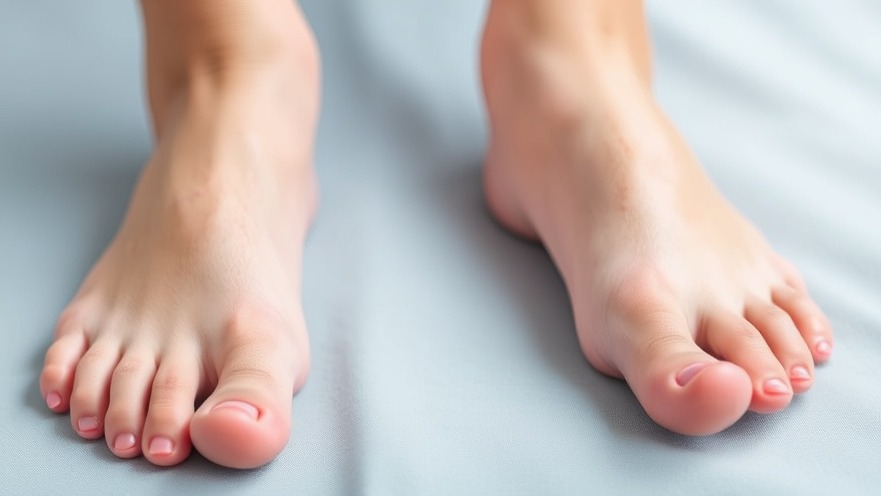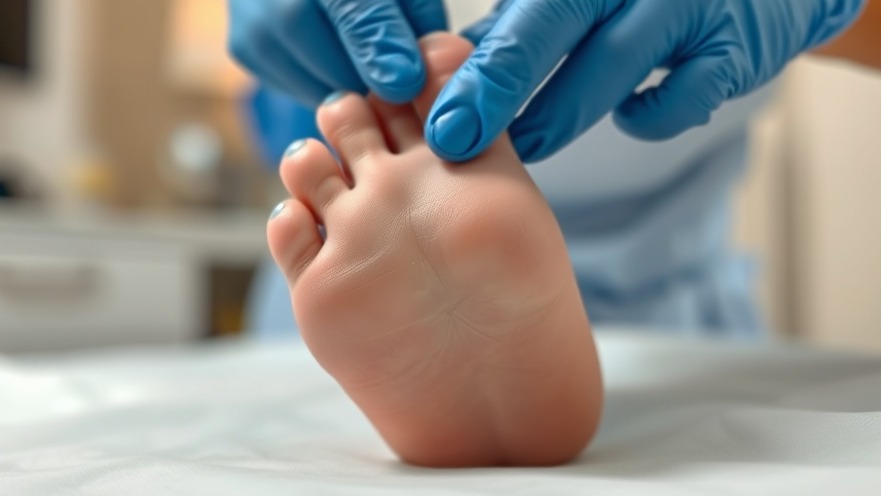
Understanding Diabetic Foot Conditions: The Silent Threat
Diabetes, a chronic disease affecting over 30 million people in the United States, can lead to serious complications, especially in the feet. The condition arises when the body fails to process food properly for energy use, stemming from either an inability to produce insulin (Type 1 diabetes) or improper insulin response (Type 2 diabetes). The Centers for Disease Control and Prevention highlights that diabetes is the seventh leading cause of death in the U.S., with many people unaware they have the disease.
Neuropathy: A Common Yet Dangerous Side Effect
One of the more insidious effects of diabetes is neuropathy, or nerve damage, which particularly impacts the feet. Patients may experience tingling, pain, or numbness, which can make it challenging to sense injuries such as cuts or blisters. This lack of sensation increases the risk of infections if these injuries go unnoticed and untreated.
To combat the onset of neuropathy, those with diabetes need to manage their blood glucose levels diligently. This management includes eating a balanced diet, maintaining a regular exercise routine, and adhering to prescribed medications as directed. It's essential to combine these factors for optimal foot health.
Calluses and Foot Ulcers: Complications that Can Worsen Quickly
Diabetes not only leads to neuropathy but can also result in the formation of calluses and foot ulcers. People with diabetes tend to develop calluses rapidly, necessitating professional care to avoid infections. While natural wear and tear on the skin can lead to calluses for anyone, individuals with diabetes risk complications if they attempt to trim them without medical guidance.
Foot ulcers can arise from untreated calluses, manifesting as painful open sores that, if ignored, can lead to severe infections and even limb amputation. Patients should report any signs of ulcers to their podiatrist immediately. Medical professionals may conduct X-rays to assess damage and perform necessary surgeries to remove infected tissue.
Poor Circulation and Peripheral Arterial Disease (PAD)
Diabetes can also lead to poor circulation in the limbs, contributing to conditions like Peripheral Arterial Disease (PAD). PAD narrows blood vessels due to the buildup of fatty deposits, increasing the risk for heart attacks and strokes in affected individuals.
Maintaining good foot health is crucial for preventing these serious vascular issues. Avoiding smoking, adhering to a healthy lifestyle, and following a doctor’s recommendations regarding blood pressure and cholesterol management can play significant roles in mitigating the risks of both poor circulation and PAD.
Practical Foot Care Tips for Diabetes Patients
People living with diabetes can take proactive steps in caring for their feet. Regular, gentle cleansing and drying of the feet, along with daily inspections for cuts, blisters, and swelling, can help catch potential issues early. It's equally important to consult with a healthcare provider before engaging in any physical activities, especially sports such as pickleball, where foot health is paramount.
Proper footwear is another critical aspect of foot care. Investing in supportive shoes can significantly decrease the risk of injuries and conditions that exacerbate foot problems. If medical advice recommends specialized footwear, it should be followed diligently.
Relating Diabetes Management to Sports Activities like Pickleball
For pickleball enthusiasts, understanding how diabetes affects foot health is crucial, particularly considering the rapid movements and the potential for injury—injuries from pickleball range from ankle sprains and wrist injuries to conditions like tennis elbow. Managing diabetes effectively means being aware of how foot health can impact performance and safety during play.
Combining good diabetic care with proper shoe support and injury prevention strategies can help players avoid common injuries and enjoy the game safely. This not only applies to pickleball but also to any sport that stresses the lower extremities.
If you or someone you know suffers from diabetes, be vigilant about foot care to prevent complications. For further advice or to schedule a consultation with a local expert today.
 Add Row
Add Row  Add
Add 




Write A Comment